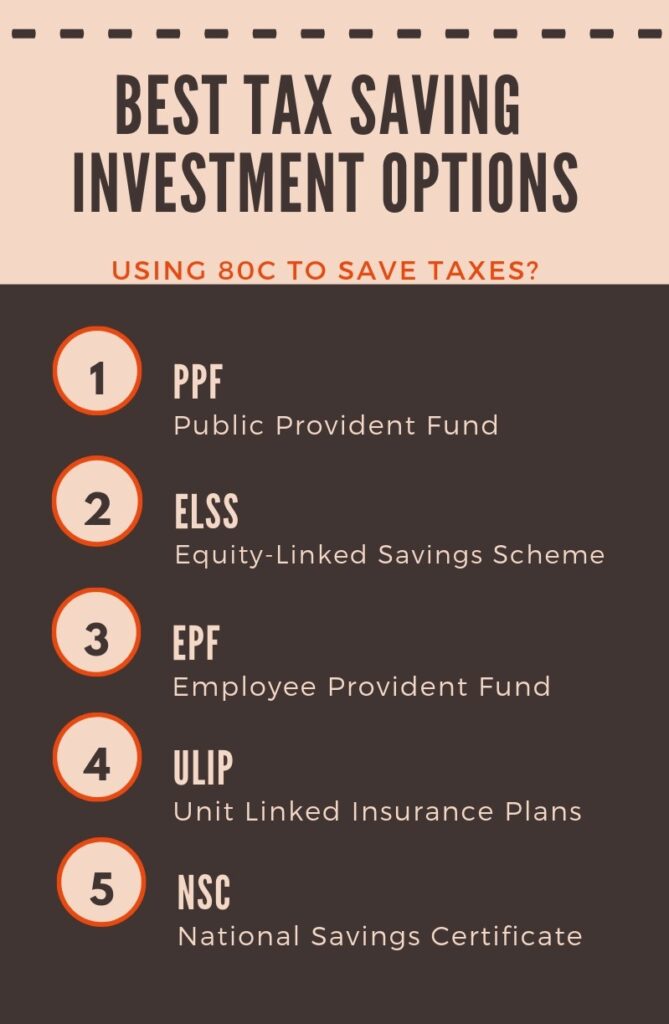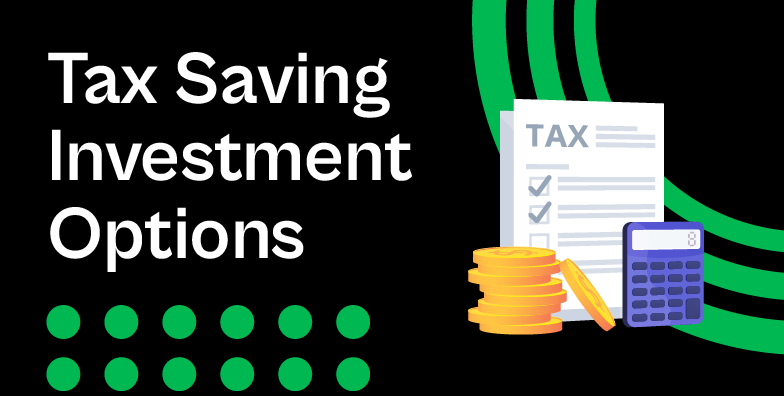Tax-Saving Investment Options in India Under Section 80C
Do you want to save money on taxes and build wealth at the same time?
Well, good news! Section 80C of the Income Tax Act lets you do exactly that.
In this blog, we’ll break down everything you need to know about Section 80C – in simple terms – so you can make smart investment choices and save up to ₹1.5 lakh in taxable income every year.
Let’s dive in. 💡
🧾 What is Section 80C?
Section 80C is a provision in the Income Tax Act of India that allows you to reduce your taxable income by investing in certain financial instruments.
You can claim a maximum deduction of ₹1,50,000 per financial year.
For example, if your annual income is ₹8 lakh and you invest ₹1.5 lakh under 80C, your taxable income will become ₹6.5 lakh.
💼 Who Can Claim 80C?
Anyone who is:
- A salaried individual
- A self-employed professional
- A HUF (Hindu Undivided Family)
Basically, if you earn and pay taxes in India, you can benefit from it.
💸 Best Tax-Saving Investment Options Under 80C

Here are the most popular and reliable options you can invest in:
1. Public Provident Fund (PPF)
- Returns: ~7.1% (government-backed, tax-free)
- Lock-in Period: 15 years
- Risk Level: Low
- Why Choose: Great for long-term wealth, completely tax-free.
2. Employees’ Provident Fund (EPF)
- Returns: ~8.25% (set by EPFO)
- Eligibility: Only salaried individuals
- Lock-in: Till retirement/resignation
- Why Choose: Automatically deducted from salary, employer also contributes.
3. Equity-Linked Saving Scheme (ELSS Mutual Funds)
- Returns: 10–15% (market-linked)
- Lock-in Period: 3 years (lowest among all)
- Risk Level: Moderate to high
- Why Choose: Shortest lock-in, good for higher returns with tax saving.
4. National Savings Certificate (NSC)
- Returns: ~7.7% (fixed by govt)
- Lock-in Period: 5 years
- Risk Level: Low
- Why Choose: Safe investment backed by the government.
5. Tax-Saving Fixed Deposits (FDs)
- Returns: 6% to 7.5% (varies by bank)
- Lock-in Period: 5 years
- Why Choose: Simple and safe option for conservative investors.
6. Sukanya Samriddhi Yojana (SSY)
- Returns: ~8.2%
- Eligibility: For girl child (below 10 years)
- Lock-in Period: Till age 21 or marriage
- Why Choose: Excellent option for your daughter’s future + tax savings.
7. Life Insurance Premiums
- Includes: Traditional and term life insurance
- Lock-in Period: 5 years (minimum)
- Why Choose: Dual benefit – life cover + tax savings.
8. Home Loan Principal Repayment
- Includes: Only the principal part of EMI (not interest)
- Lock-in: 5 years (if claimed for tax)
- Why Choose: If you already own a home loan, this is a no-brainer.
9. Tuition Fees for Children
- Eligibility: Up to 2 children
- Applies To: Only full-time education in India
- Why Choose: Great relief for parents paying school/college fees.
10. Senior Citizens Savings Scheme (SCSS)
- Returns: ~8.2%
- Eligibility: Age 60+
- Lock-in Period: 5 years
- Why Choose: Safe and high-return option for retirees.
🧠 Quick Comparison Table
| Investment Option | Lock-in Period | Return Type | Risk | Ideal For |
|---|---|---|---|---|
| PPF | 15 years | Fixed, tax-free | Low | Long-term savers |
| ELSS | 3 years | Market-linked | Moderate | High returns seekers |
| Tax-Saving FD | 5 years | Fixed | Low | Conservative investors |
| NSC | 5 years | Fixed | Low | Safe savers |
| SSY | Till 21 yrs | Fixed | Low | Parents of girl children |
| Life Insurance | 5+ years | Varies | Low | Family protection |
✅ Tips to Choose the Right Option
- For High Returns: Choose ELSS
- For Safe Investment: Choose PPF, FD, NSC
- For Children’s Future: Choose SSY, Tuition Fee
- For Retirement: Choose SCSS, PPF
- For Regular Salary Earners: Maximise EPF & Home Loan Benefit
📝 Final Thoughts
Tax-saving doesn’t have to be boring or complicated.
If you plan your investments wisely, you can save up to ₹46,800 in taxes every year (assuming 30% tax bracket) – and grow your wealth at the same time.
So don’t wait till March. Start now. Your future self will thank you. 💰
Read More:https://wealthfitlife.com/sip-vs-lumpsum-investment-which-is-better-for-you/
❓ Frequently Asked Questions (FAQs)
- Q: What is the maximum deduction allowed under Section 80C?
A: ₹1.5 lakh per financial year. - Q: Can I claim 80C without investing?
A: Yes, if you’re already paying for life insurance, tuition fees, EPF, or a home loan principal. - Q: Which 80C option gives the highest return?
A: ELSS funds, but they come with higher risk. - Q: Is PPF better than ELSS?
A: PPF is safer; ELSS offers higher returns. Depends on your risk profile. - Q: Can NRIs claim 80C benefits?
A: Some options like ELSS and life insurance are available for NRIs, but others like PPF are not. - Q: Is the interest earned also tax-free?
A: Only for some options like PPF and ELSS (long-term capital gains up to ₹1 lakh are tax-free). - Q: What is the shortest lock-in period?
A: ELSS – only 3 years. - Q: Can I split 80C investment across multiple options?
A: Yes! You can mix and match to suit your needs. - Q: Is it mandatory to invest the full ₹1.5 lakh?
A: No, but you’ll only get tax benefit on the amount you invest. - Q: Is 80C applicable every year?
A: Yes. It resets every financial year (April to March).

